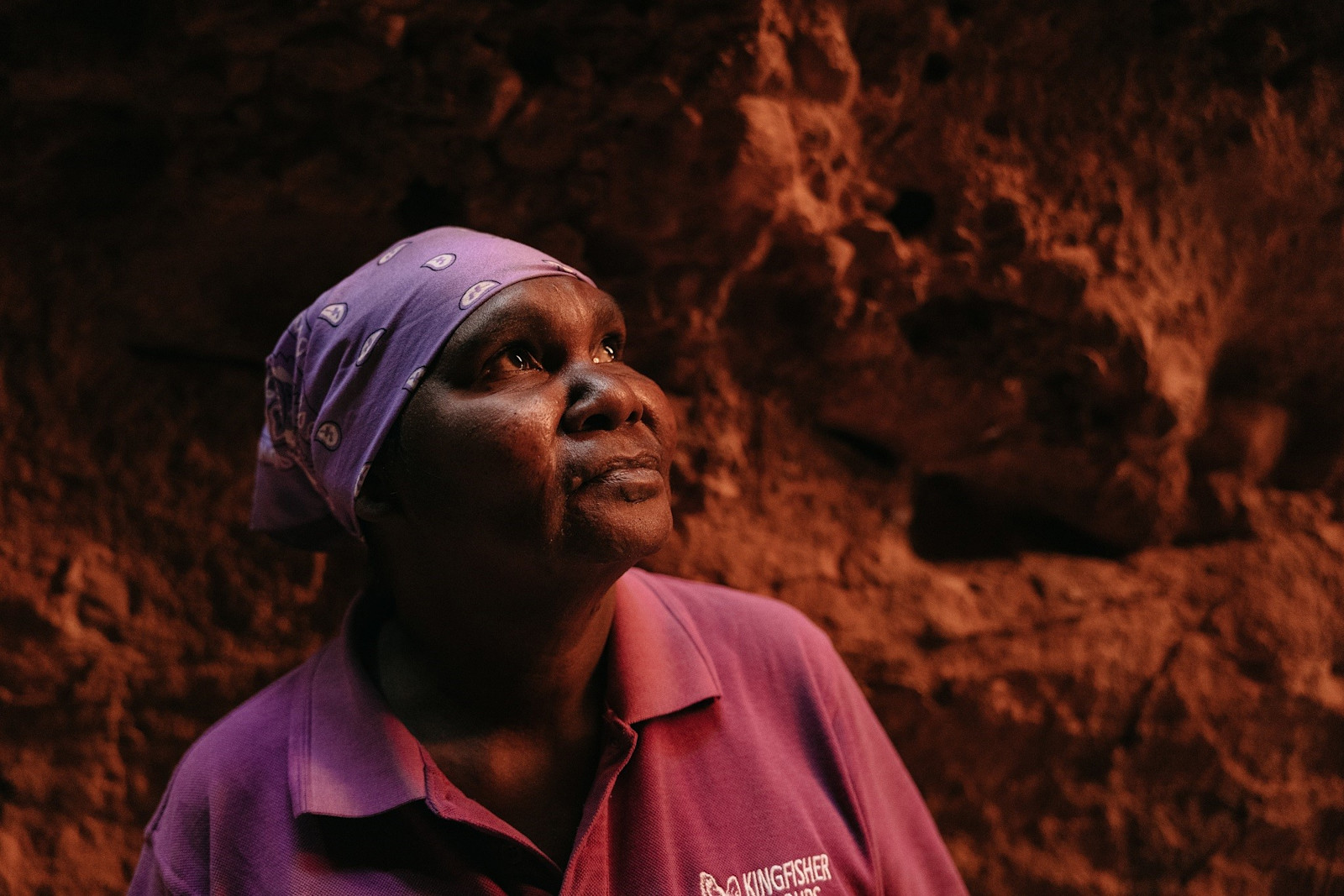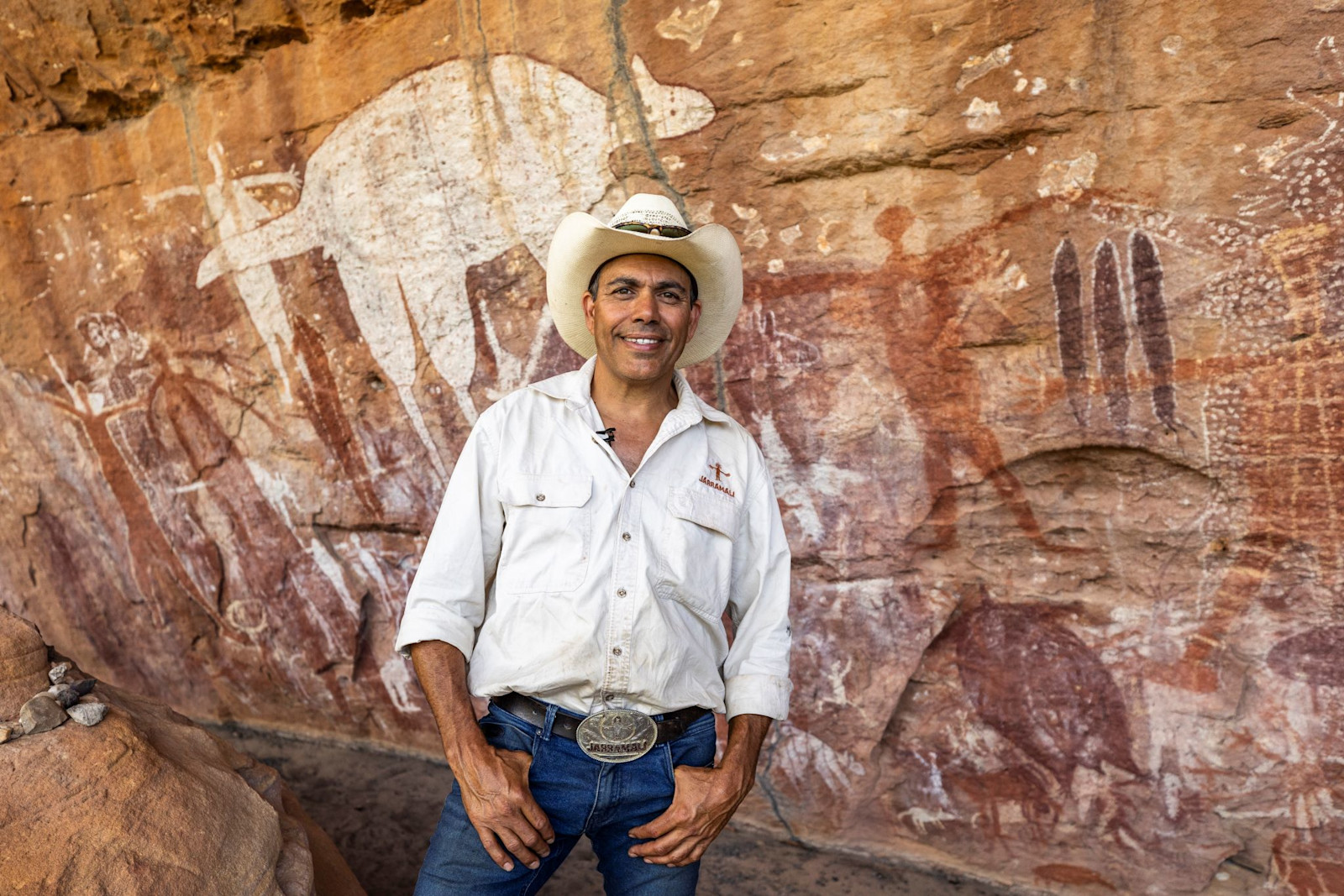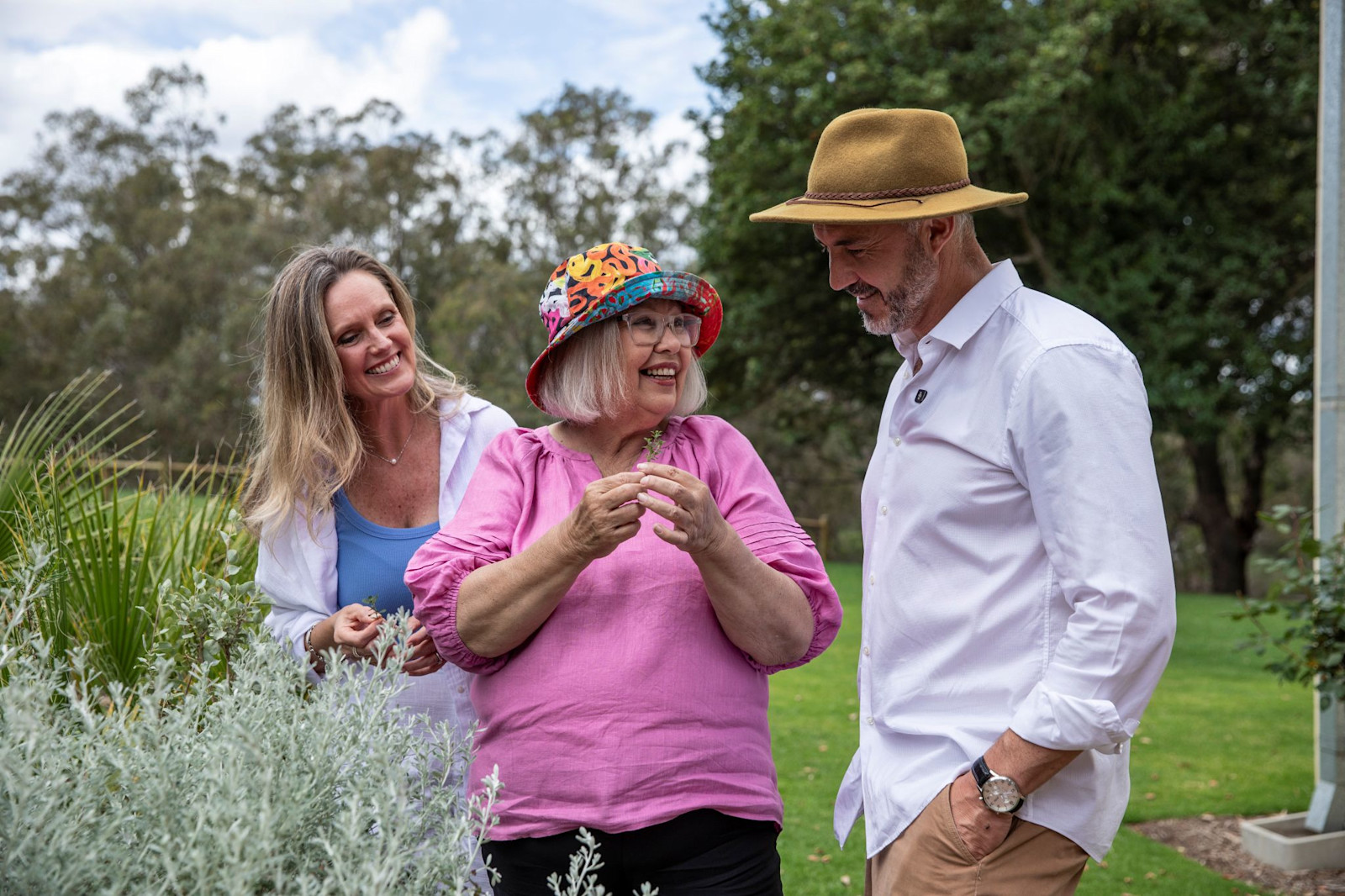Guide to the boomerang in Aboriginal cultures
An international symbol of Australia, the boomerang is not just a hunting tool to Aboriginal communities, but also a representation of cultural endurance.

Guide from Koomal Dreaming explaining the uses of various tools © Tourism Australia
What is a boomerang?
Traditionally carved from wood into a ‘7’ shape, the boomerang has many uses among Aboriginal communities: a hunting tool, a play toy, a musical instrument, a weapon, a work of art…
Essentially, there are two types of this ancient Aboriginal device: the returning boomerang, and the non-returning. The former (designed to return to the thrower) was often used as a plaything – in tournaments and by hunters to imitate the sound of birds to drive them from trees; coastal Aboriginal communities favoured these lighter tools. The non-returning boomerang, however, was designed as a weapon, to be thrown straight. It’s longer, straighter and heavier than its returning variety, and traditionally used by inland and desert Indigenous communities.
The first boomerangs were made from a single piece of carved wood. The carver heated the wood in hot ashes and then bent it to get the right shape. Carving and colouring of boomerangs also differs across the continent; the styles of decoration are as varied as the individual makers.

Josh Whiteland from Koomal Dreaming demonstrating how to make fire, Margaret River, Western Australia © Tourism Australia
What is the significance of boomerangs to Aboriginal communities?
The boomerang features heavily in Aboriginal Creation mythology. In the Dreaming, many significant features – rivers, rock formations and mountains – were created when ancestors threw boomerangs and spears into the Earth. And for many thousands of years since, Aboriginal groups exchanged boomerangs across the continent – even bartering them with colonial settlers in recent centuries.
“They were traditionally used for hunting birds and game, like emu, kangaroo and other marsupials,” says Josh Whiteland, owner of Koomal Dreaming tours in the Margaret River Region of Western Australia. “The hunter can throw the boomerang directly at the animal or make it ricochet off the ground. In skilled hands, the boomerang is effective for hunting prey up to 100 metres away.”
“Boomerangs can also be used to kill fish – designed to slice through water, these boomerangs are heavier and have none of the aerodynamic qualities of flying boomerangs.”
Josh says the different sizes of boomerangs indicate different uses: a large one might fell an emu, while a smaller one can be thrown into water to stun a school of fish. The way it’s carved and shaped affects the way it flies.
Adding to their versatility, boomerangs can be used as a digging stick when foraging for vegetables; and can spark a fire when the sharp edge of the tool is rubbed along a softwood surface to create heat. They also feature prominently in Aboriginal dance and music, as a percussion instrument when a pair are rattled together, and as an accessory to ceremonial dance.

Janbal Gallery, Mossman, Queensland
Just how old is the boomerang?
Indigenous communities have called Australia home for some 65,000 years. And evidence shows that the boomerang has been part of daily life for at least the last 20,000 years of this culture. Bradshaw / Gwion Gwion rock art in the Kimberley region of Western Australia dating back 20 millennia depicts hunters holding the distinctive wooden objects. And at Wyrie Swamp in South Australia, artefacts have been found that date back at least 10,000 years.
Where can I get acquainted with boomerangs?
Just like there are different types of boomerangs, there are many ways to discover its cultural significance, whether you’re throwing one, painting it or admiring rock art.
Channel your inner artist in creative sessions at Janbal Gallery in Mossman, north of Cairns / Gimuy in Tropical North Queensland. Here, you can learn how to dot-paint canvases, paper or boomerangs under the guidance of Brian ‘Binna’ Swindley, the gallery’s owner and a talented artist. At the end of the lesson, you’ll have your very own piece of Australian art to take home – along with a memorable taste of Kuku Yalanji culture.

Guide demonstrating how to throw a boomerang at Pamagirri Aboriginal Experiences, Kuranda, Queensland © Tourism Australia
Your arms also get a workout on a Pamagirri Aboriginal Experience held nearby at Rainforestation Nature Park. Here, your hosts greet you with a Welcome to Country ceremony and traditional performance, then point you in the direction of spears and boomerangs to fling over people-free fields. It’s not as easy as it looks, but you may just become a pro.
In the northern Territory near Kings Canyon, guides on a tour with Karrke Aboriginal Cultural Experience & Tours teach you the skills associated with throwing a non-returning boomerang; you can also try your hand in the shadow of Uluru with SEIT Patji.
Make your way to Western Australia where Kingfisher Tours Garingbaar operates experiences through some of the Kimberley’s most dramatic regions. Rock art here dates back tens of thousands of years, and your guide will point out ancient interpretations of the tool on cave walls. “They were used as fighting sticks” says Bec Sampi, a head guide with Kingfisher. “Their images are like signposts, pointing to the warriors that would’ve been positioned up high, guarding this place. Permission to pass would be granted only after connections were made: you’d need to acknowledge the local people and Country you’re walking on, and talk about who you are and where you’re from.”












